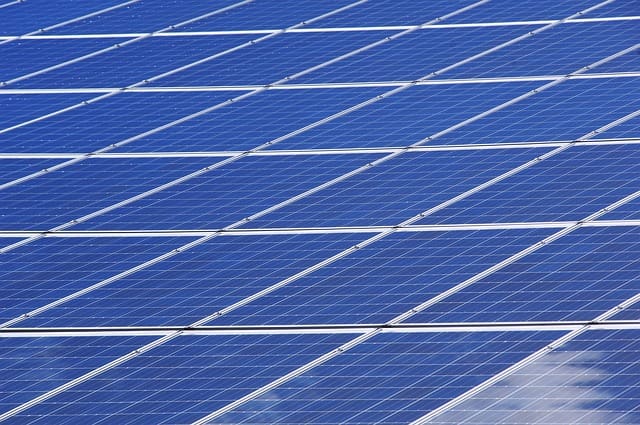
Lakes and ponds used by water utilities have long been viewed with a single purpose: holding water. Now a handful of pioneering water utilities are looking at their aquatic real estate with a new purpose in mind: installing floating solar panels for solar energy generation.
Large-scale floating solar projects have been installed in Japan and China, as well as on ponds at California wineries. But solar energy has remained primarily a terrestrial endeavor because, in most cases, it is simpler and cheaper to mount photovoltaic (solar) panels on land.
That is beginning to change. The floats and other mounting components unique to water-based solar cost slightly more, but that difference will evaporate with more projects. And as solar has proliferated in some areas, it has become harder to find available land for new installations.
Advantages of Floating Solar
Now a few water agencies are embracing floating solar to maximize the utility of their storage ponds and reservoirs. Floating solar panels can provide energy that offsets operating costs and reduces greenhouse gas emissions. And there are other benefits: Floating solar panels throw shade on the water surface, which can reduce evaporation and algae growth.
Sonoma County Water Agency will install floating solar panel arrays later this year. The panels will float on its Oceanview treated wastewater pond in Windsor, where shade from the panels will reduce the cost of algae control, and the electricity produced will help power the treatment process.
The agency had already built solar arrays on rooftops and parking lots, said general manager Grant Davis. The next choice was ranch land, but that posed a conflict with livestock grazing operations.
“We were looking then for disturbed acreage that was going to be out of sight, out of mind,” Davis said. “And what better place than a wastewater treatment pond?”
The agency agency’s board of directors adopted a policy in 2008 to become “carbon free” by 2015. This means it aimed to eliminate carbon dioxide emissions from its energy demand – a goal that it met.
Experimental Floating Solar Projects
So about three years ago the agency signed a contract with Pristine Sun, a San Francisco firm. They wanted to develop a floating solar panel system for several of its treatment ponds. Pristine had not built a floating solar system before. But after some research and testing, the first system was installed as a pilot project at the Oceanview treatment pond in summer 2016.
The trial was successful. A permanent installation at the pond will hopefully go live by the end of this year. It will produce 1 megawatt of electricity, enough to offset 4 percent of the agency’s electrical demand. The panels come mounted on plastic floats borrowed from the dredge-mining industry.
The team plans five more floating solar projects on other treatment ponds. In total, they’ll produce enough electricity to power 3,500 homes.
“We’ll see about $33,000 in annual power savings at buildout,” Davis said.
The water agency pays nothing for these projects. Pristine Sun covers all costs for equipment, installation and permitting, then makes its money selling the energy generated.
Troy Helming, Pristine Sun’s founder and chief executive, said floating solar is still extremely rare in the U.S. But he said the potential is “enormous.”
In California alone, using a very conservative estimate of available inland water surface area, Helming estimates floating solar could produce 20 gigawatts of electricity. That’s more than 10 percent of the state’s total energy need.
Read more here
